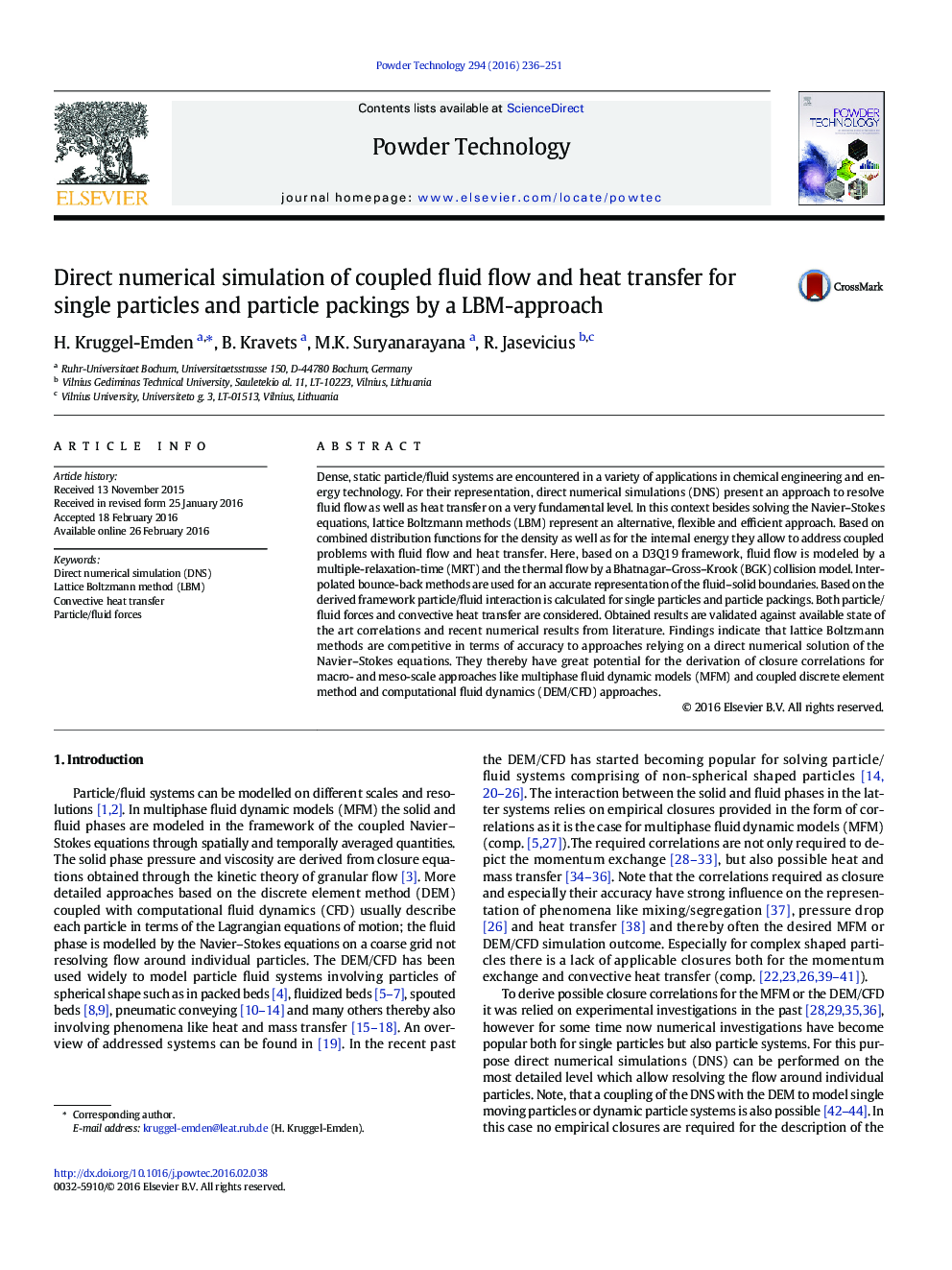| کد مقاله | کد نشریه | سال انتشار | مقاله انگلیسی | نسخه تمام متن |
|---|---|---|---|---|
| 235065 | 465627 | 2016 | 16 صفحه PDF | دانلود رایگان |

• DNS of fluid flow and heat transfer at single particles and in packings is performed.
• A DDF-LBM scheme relying on interpolated bounce back is derived.
• Particle/fluid forces as well as heat transfer is well represented.
• The scheme is applicable to non-spherical shaped particles in the future.
Dense, static particle/fluid systems are encountered in a variety of applications in chemical engineering and energy technology. For their representation, direct numerical simulations (DNS) present an approach to resolve fluid flow as well as heat transfer on a very fundamental level. In this context besides solving the Navier–Stokes equations, lattice Boltzmann methods (LBM) represent an alternative, flexible and efficient approach. Based on combined distribution functions for the density as well as for the internal energy they allow to address coupled problems with fluid flow and heat transfer. Here, based on a D3Q19 framework, fluid flow is modeled by a multiple-relaxation-time (MRT) and the thermal flow by a Bhatnagar–Gross–Krook (BGK) collision model. Interpolated bounce-back methods are used for an accurate representation of the fluid–solid boundaries. Based on the derived framework particle/fluid interaction is calculated for single particles and particle packings. Both particle/fluid forces and convective heat transfer are considered. Obtained results are validated against available state of the art correlations and recent numerical results from literature. Findings indicate that lattice Boltzmann methods are competitive in terms of accuracy to approaches relying on a direct numerical solution of the Navier–Stokes equations. They thereby have great potential for the derivation of closure correlations for macro- and meso-scale approaches like multiphase fluid dynamic models (MFM) and coupled discrete element method and computational fluid dynamics (DEM/CFD) approaches.
Figure optionsDownload as PowerPoint slide
Journal: Powder Technology - Volume 294, June 2016, Pages 236–251